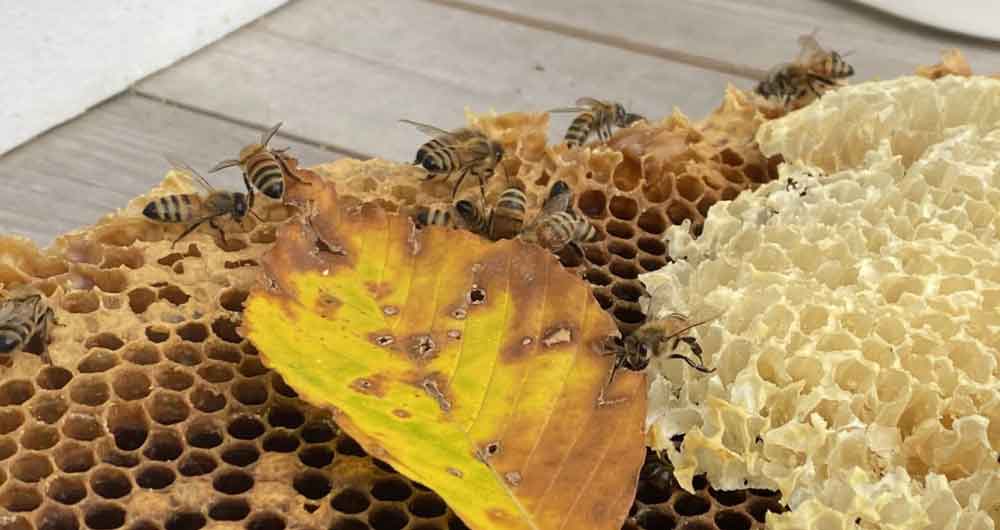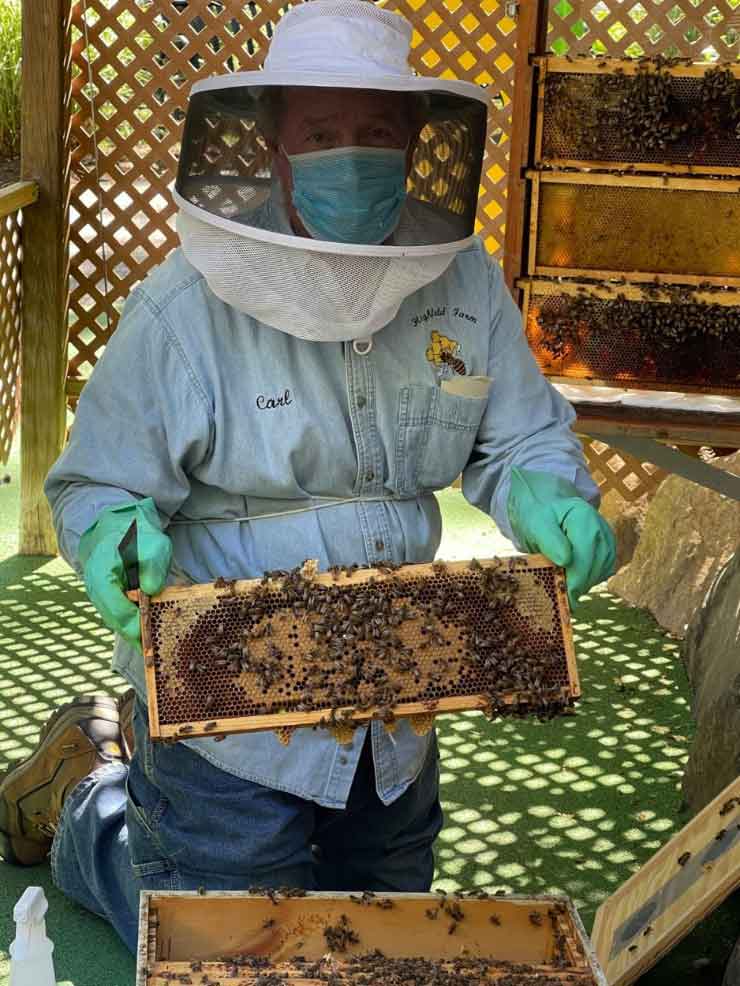Italian Honey Bees
APIS MELLIFERA

HABITAT
Meadows, gardens, and open woodlands
GEOGRAPHIC REGION & RANGE
Native to Europe, Africa, and Western Asia. Found all over the world including east Asia, Australia, and the Americas.
DIET
Nectar and pollen
PHYSICAL DESCRIPTION
Honey bees are red/brown with yellow rings on their abdomen. Their body is divided into the head, thorax, and abdomen. They have three pairs of legs, and two pairs of wings.
SIZE
Body: 1-2 cm
WEIGHT
4,000 bees combined only weigh one pound!
LIEFESPAN
Average queen life is 2-5 years. Workers live a few weeks to a few months.
THREATS
Pesticides – bees interact with the chemicals that are applied to plants and these chemicals interfere with their nervous systems, causing paralysis and eventually death. Habitat loss – without plants for them to pollinate, there can’t be bees!
STATUS
Not Evaluated
FUN FACTS
Honey bees pollinate 71 out of 100 of the most common crops – accounting for 90% of the world’s food supply!
In the United States, bees pollinate nearly $15 billion worth of crops every year, and $200 billion globally.
Honey bees are partly endothermic – they will warm themselves and the hive by working their flight muscles.
Bears, honey badgers, birds, skunks, and toads all eat honey bees.
Rock art dating back to around 7000 BCE shows that humans have been collecting honey from bees for thousands of years!
What are AZA Zoos doing for Italian Honey Bees?
Many zoos have pollinator gardens or way stations on grounds, celebrate pollinator conservation holidays, or have demonstration hives like Brandywine Zoo does. Additionally, AZA and the National Pollinator Garden Network and is promoting the Million Pollinator Garden Challenge, a campaign furthering pollinator conservation by having volunteers create, maintain, and register pollinator gardens at their homes, workplaces, and communities.

